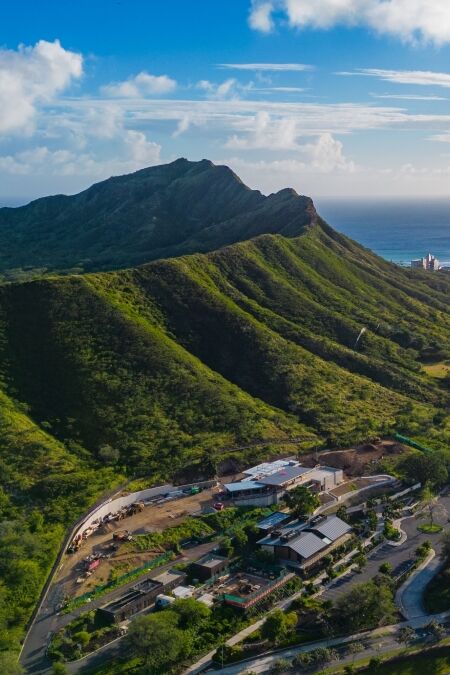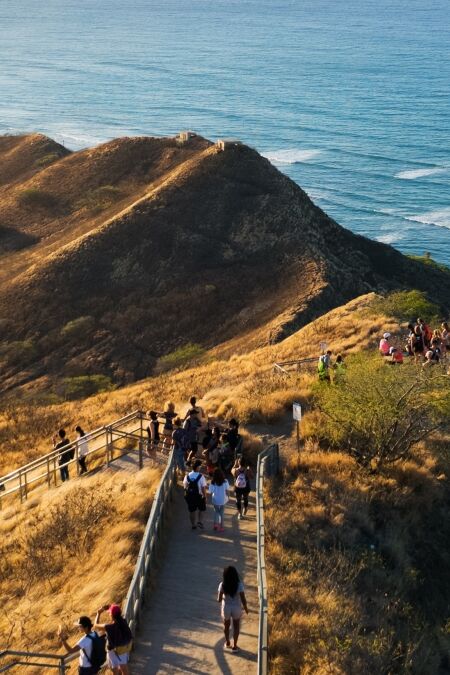Diamond Head stands as one of the most iconic landmarks, capturing the hearts and imaginations of travelers from across the globe. Let’s delve into the 10 captivating facts about Diamond Head, shedding light on its rich history, unique geography, and the myriad of experiences it offers. By unveiling these intriguing details, we aim to enrich the visitor experience, making your journey to this majestic landmark a voyage through time and nature.
Fact 1: Diamond Head’s shape resulted from an explosive formation.

Diamond Head, a breathtaking volcanic cone on the Hawaiian island of Oahu, serves as a monumental testament to Earth’s powerful geological forces. This geological wonder was formed approximately 150,000 years ago through a single, explosive volcanic eruption. Unlike the slow, flowing eruptions seen in other Hawaiian volcanoes, Diamond Head’s creation was marked by a rapid, symphonic blast that shaped its distinctive silhouette. The eruption ejected ash and fine particles into the air, which eventually settled and solidified into the tuff cone we admire today. This process encapsulates the dynamic nature of volcanic activity in Hawaii, showcasing Diamond Head as a prime example of the island’s unique volcanic landscape.
Fact 2: “Diamond Head” was named due to British sailors’ misinterpretation.
The name “Diamond Head” has a story as captivating as its landscape, originating from a misunderstanding by British sailors in the 19th century. Mistaking calcite crystals on the beach for diamonds, they inadvertently christened this majestic landmark with a name that speaks more to human aspiration than geological accuracy. In contrast, its Hawaiian name, Lē‘ahi, poetically reflects its physical appearance, deriving from “lae” meaning ‘brow’ and “ahi” meaning ‘tuna,’ because the formation resembled the fin of a tuna fish. This blend of names and stories—Diamond Head and Lē‘ahi—encapsulates the rich tapestry of cultural and historical perspectives that define Hawaii, offering a glimpse into the island’s past through the lens of its most iconic symbol.
Fact 3: Diamond Head evolved from a navigational aid to a military base.
Diamond Head’s history is as layered and multifaceted as the stratified rock that composes it, serving various pivotal roles throughout the ages. To ancient Hawaiians, this towering edifice was a crucial navigational landmark, its imposing silhouette a guide for voyagers across the vast Pacific. Fast forward to the 20th century, and Diamond Head assumed a new identity as a strategic military lookout and fortification, playing a significant role in the defense of the Hawaiian Islands during periods of international conflict. This transition from a symbol of natural guidance to a bastion of military might encapsulate Diamond Head’s historical significance, highlighting its enduring presence in the changing tides of Hawaiian history.
Fact 4: A hiking trail takes adventurers to its summit.
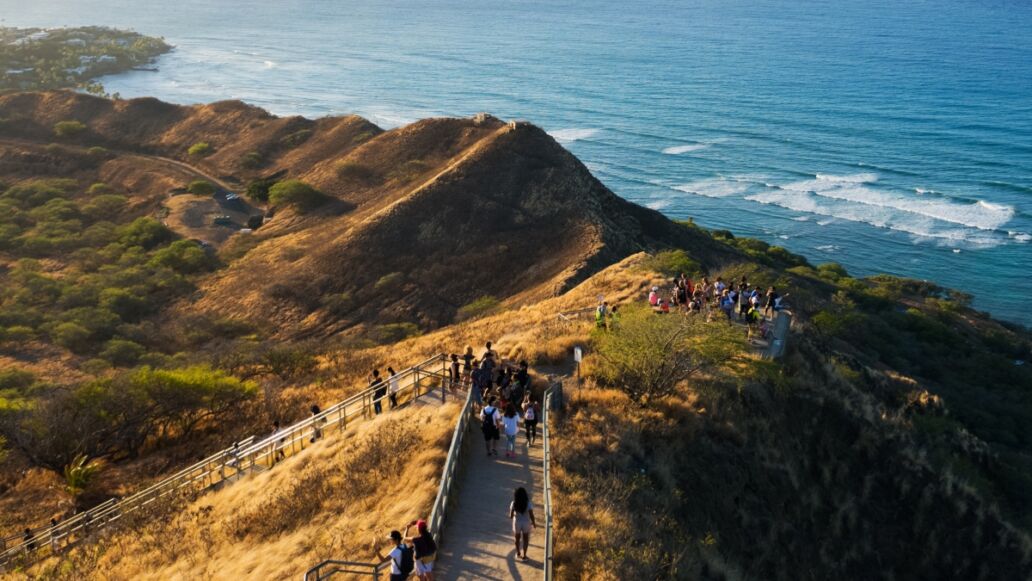
Embark on the popular hiking trail up Diamond Head to experience a journey that is as rewarding as the destination itself. Rated as moderately difficult, the trail invites adventurers to navigate switchbacks, stairs, and tunnels before reaching the summit. Along the way, hikers are treated to a preview of the natural beauty that culminates in breathtaking panoramic views at the peak, offering a unique perspective of Hawaii’s landscape.
Fact 5: Diamond Head’s summit offers unparalleled views.
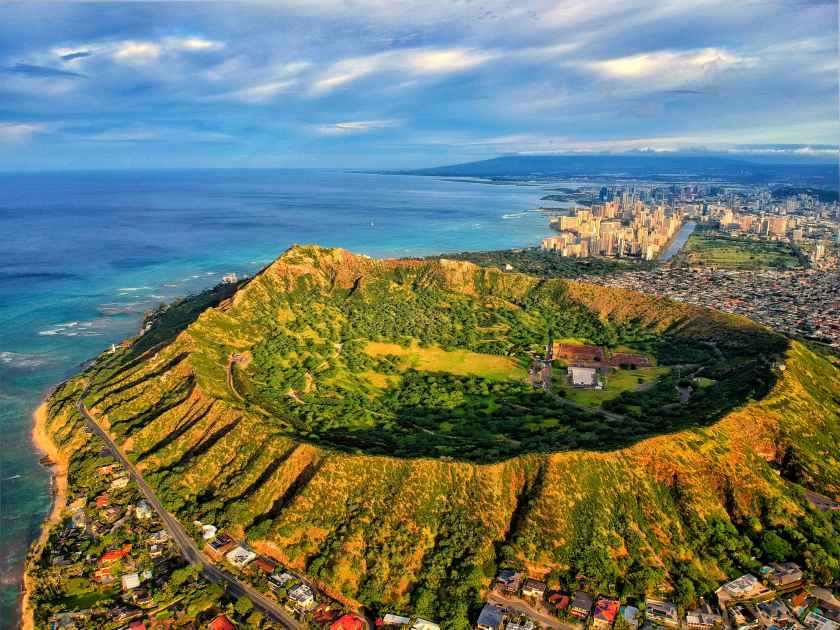
Atop Diamond Head, hikers are rewarded with unparalleled panoramic vistas of Honolulu, Waikiki Beach, and the vast Pacific Ocean. This vantage point provides a stunning, bird’s-eye view of the island’s beauty, making the trek a must-do for any visitor wishing to capture the essence of Hawaii from an extraordinary perspective.
Fact 6: Diamond Head is a Cradle of Biodiversity
Within the crater and its surroundings, Diamond Head is a sanctuary for unique flora and fauna, emphasizing the ecological importance of this natural monument. Efforts to conserve its diverse ecosystem help to maintain the delicate balance of native species, showcasing Hawaii’s commitment to environmental conservation.
Fact 7: It is the Cultural Heartbeat of Hawaii

Diamond Head’s silhouette is more than just a natural landmark; it’s a cultural icon that resonates deeply with Hawaiian folklore, arts, and media. Its presence in local culture and traditions underscores its significance beyond its physical form, highlighting its role in the cultural tapestry of the islands.
Fact 8: Diamond Head is celebrated through festivals and sports.
As a modern-day landmark, Diamond Head stands as a picturesque backdrop for a variety of events, from exhilarating marathons to vibrant festivals. Its iconic profile adds a touch of majesty to every occasion, cementing its status as a central figure in contemporary Hawaiian society.
Fact 9: Diamond Head is a cinematic paradise
The allure of Diamond Head extends into the world of entertainment, where its scenic beauty has been captured in numerous films and TV shows. Its picturesque landscape makes it a sought-after location for filmmakers, adding a touch of Hawaiian charm to cinematic productions.
Fact 10: Efforts are being made to preserve Diamond Head
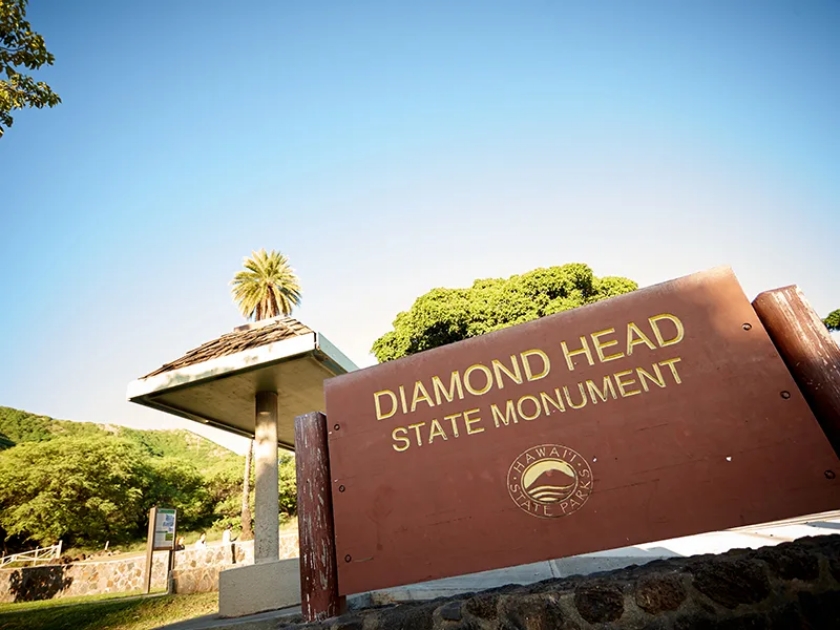
Dedicated preservation efforts are underway to ensure Diamond Head remains a beacon for future generations. Through visitor restrictions and conservation initiatives, Hawaii safeguards this natural wonder, striving for sustainable tourism that honors the spirit of the island while protecting its majestic beauty.
Discover the Splendor of this Natural Wonder!
Diamond Head is a majestic form, born from explosive volcanic activity, and its role as a guidepost for ancient navigators and a strategic military lookout, invites travelers to delve into the rich stories that make it a must-visit destination. As you embark on this journey, we urge you to tread lightly, honoring the ecological and cultural sanctity of this iconic landmark. And if you’re craving more travel inspiration and tips for exploring Hawaiian destinations, make sure to follow our blog and social media channels. Your next adventure starts here!


